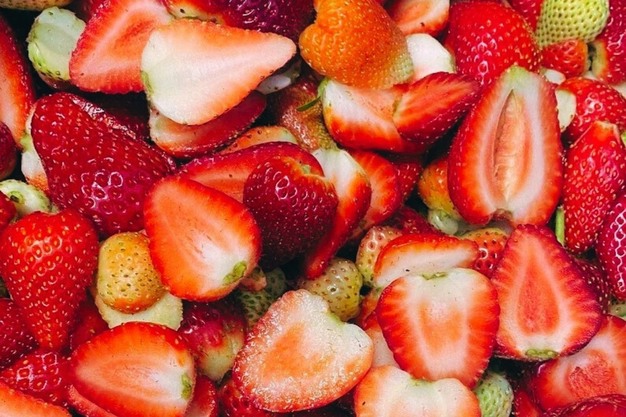The genetic basis of strawberry aroma
Researchers at CRAG have identified the FvHI gene as a key factor in regulating the compounds that shape the fresh aroma of strawberries. Their work shows that this gene modulates the balance of volatile molecules responsible for the fruit’s fragrance. By studying wild strawberry, the team demonstrated that FvHI expression controls the ratio between two important aromatic molecules, which clarifies how the fruit’s signature scent develops. This breakthrough supports the creation of strawberry varieties with better aroma and improved resilience to damage, wounds, and certain pathogens by using natural compounds tied to both flavour and plant defence.
Aroma is one of the most valued traits of strawberries, yet also one of the most complex. It depends on sugars, acidity, texture, and above all, volatile compounds that define the characteristic fragrance. Among these, green leaf volatiles stand out. They provide the fresh, slightly herbaceous notes typical of the most aromatic strawberries.
 Cultivated strawberry
Cultivated strawberry
Two molecules are central to these qualities: (Z)-3-hexenal, which gives greener notes, and (E)-2-hexenal, which produces fresher and sweeter tones. Until now, the gene responsible for converting one molecule into the other was unknown. The study, carried out by CRAG researchers Rong Zhang, Dylan Nunnally, and Elli Koskella and led by IRTA researcher Amparo Monfort, reveals how this conversion is controlled. Their findings, published in Horticulture Research, explain the mechanism that balances these two compounds and how this knowledge can guide the development of improved strawberry varieties.
Researchers confirmed that differences in strawberry aroma are driven by how the FvHI gene is regulated rather than by changes in the protein it encodes. When FvHI expression is low, (Z)-3-hexenal rises, strengthening green notes. When expression is high, (E)-2-hexenal increases, creating a sweeter aroma. This shows that FvHI acts as a molecular switch that shapes the final smell and taste of the fruit.
 Wild strawberry
Wild strawberry
To uncover this mechanism, the team worked with nearly isogenic lines, which are genetically similar except for a specific genomic region. These lines came from a cross between diploid strawberry species. This approach made it possible to isolate the gene responsible for aroma and validate its function. According to Monfort, this strategy is especially useful because cultivated strawberry is an octoploid crop with eight sets of chromosomes, which complicates genetic studies. Its wild relative, Fragaria vesca, has a simpler diploid genome but still shares much of its architecture with commercial strawberry, making it an ideal research model.
The compounds involved in this aroma pathway also play a role in the plant’s response to damage and wounds. Understanding how these molecules are regulated not only improves fruit quality but also opens the door to enhancing natural plant defences.
The results provide new tools to guide breeding efforts toward varieties with flavours that consumers appreciate most. Aroma is a core part of taste, along with the balance of sugars and acids, and this research lays the groundwork for strawberries with fresher and more balanced profiles. Beyond flavour, the green leaf volatiles studied here are essential to a plant’s natural defence system. This discovery supports the development of fruit with improved aroma and the creation of crops that are more resilient and less reliant on chemical treatments, helping move agriculture toward more sustainable practices.
View the full study here.
For more information:
Center for Research in Agricultural Genomics
